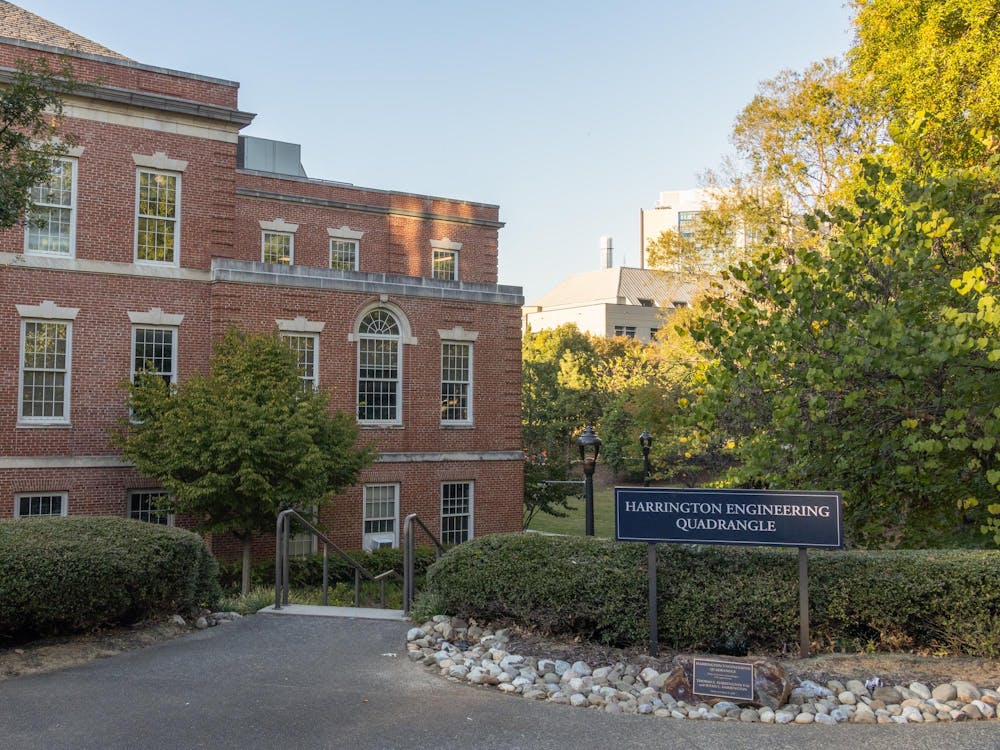Shannon Plunkett, a civil and environmental engineering doctoral student at Duke, won an award this summer for “Best Student Presentation” at the International Conference for Mercury as a Global Pollutant.
Her prize-winning project focused on the environmental impact of cyanide processing plants, which operate as a method of extracting gold.
Before coming to Duke, Plunkett obtained a bachelor’s degree in geography and Spanish, as well as a Master of Lead Contaminant Chemistry from the University of Wisconsin-Madison. She explained that she “was interested in doing a Ph.D. that could draw from all of those pockets,” which led her to environmental toxicology research in South America.
Plunkett explained that much of her work involved collecting water and sediment samples from bodies of water near hard rock processing locations in southern Ecuador, including Portovelo, areas near the Peruvian border, the Ecuadorian Amazon and the Napo River Basin.
“These plants discharge water that has mercury, cyanide, lead [and] arsenic … and so I researched how that changes as it goes downstream,” she said.
Plunkett found that as mercury — a highly toxic heavy metal — interacts with other chemicals downstream from initial dumping sites, it can become more dangerous, threatening the health of humans and wildlife in the surrounding area. Specifically, regions 30 to 90 miles south of where chemicals initially entered waterways reported the highest concentrations of methylmercury, a more toxic form of the metal.
While the conference where she received the award focuses primarily on the impacts of mercury pollution, Plunkett stressed the importance of considering additional factors.
“In the discourse around artisanal and small-scale gold mining, mercury gets a lot of attention, and in some ways, this makes sense because gold mining is the number one anthropogenic source of mercury on the planet. And it's something that's not naturally present,” she said. “It makes sense that you're focusing on that because you're adding it.”
Plunket views this kind of limited approach as “too narrow.”
“It is, in fact, really much broader than that,” she said. “You can't do just single-contaminant regulation because you miss a lot of other things.”
She pointed to the myriad “downstream effects” of gold mining, including other contaminants, social upheaval and deforestation — all of which result in adverse health outcomes.
Now, Plunkett has shifted the focus of her research to look at more effective contaminant regulation methods.
She is currently part of the environmental team on a new multidisciplinary project, which she described as “the effects of artisanal and small-scale gold mining on the people and the environment of the Ecuadorian Amazon.”
She hopes that as the research develops, other members of the field will pivot to more multi-contaminant regulation solutions. She explained that while there is a lot of effort in promoting technologies that don’t use mercury, these technologies still use harmful substances such as cyanide, lead, arsenic and cadmium.
“Those technologies won't solve the other concomitant contaminants, and so potentially technologies that are focused on removing those contaminants as well … are necessary,” Plunkett said.
Get The Chronicle straight to your inbox
Sign up for our weekly newsletter. Cancel at any time.
Ella Moore is a Trinity first-year and a staff reporter for the news department.

